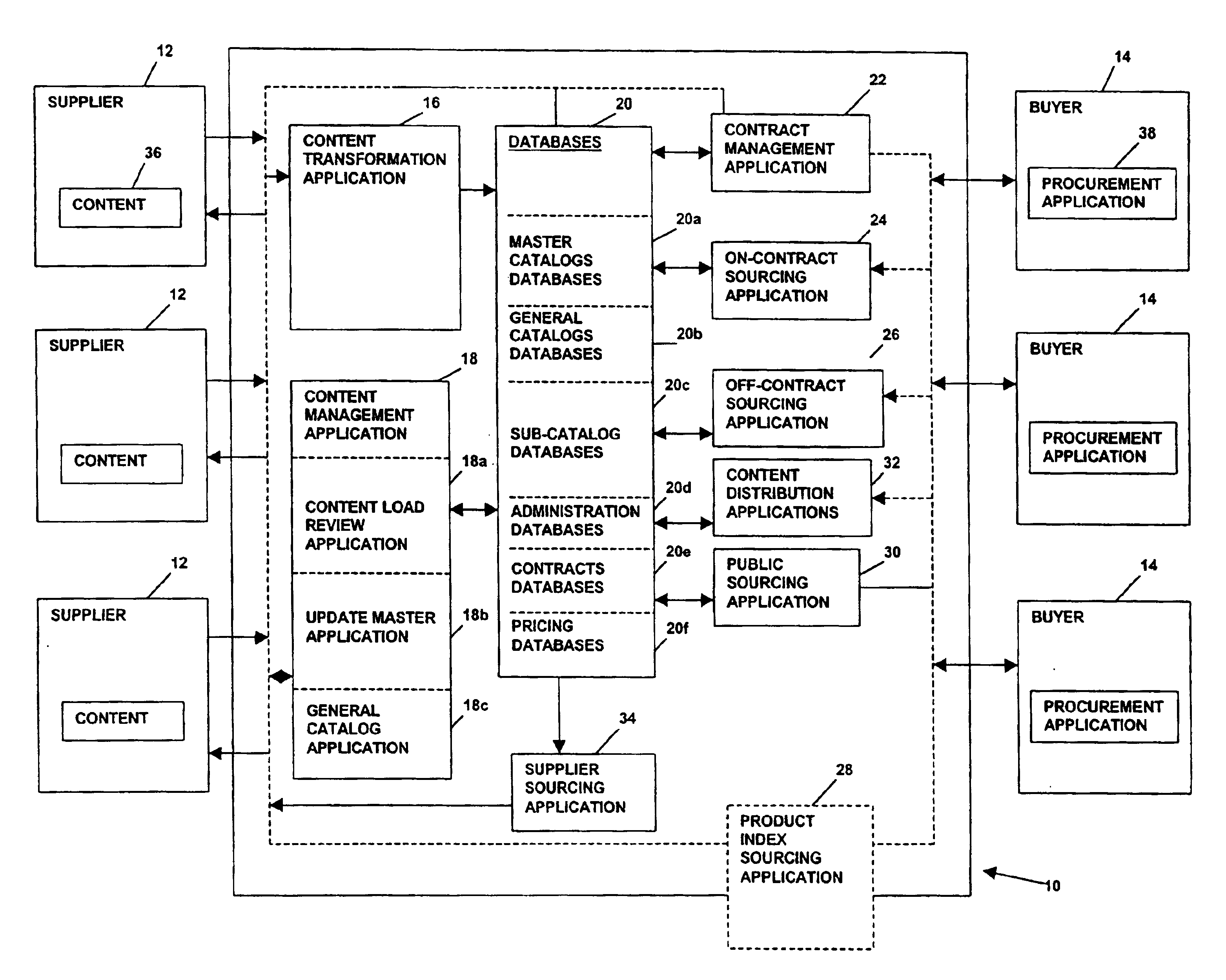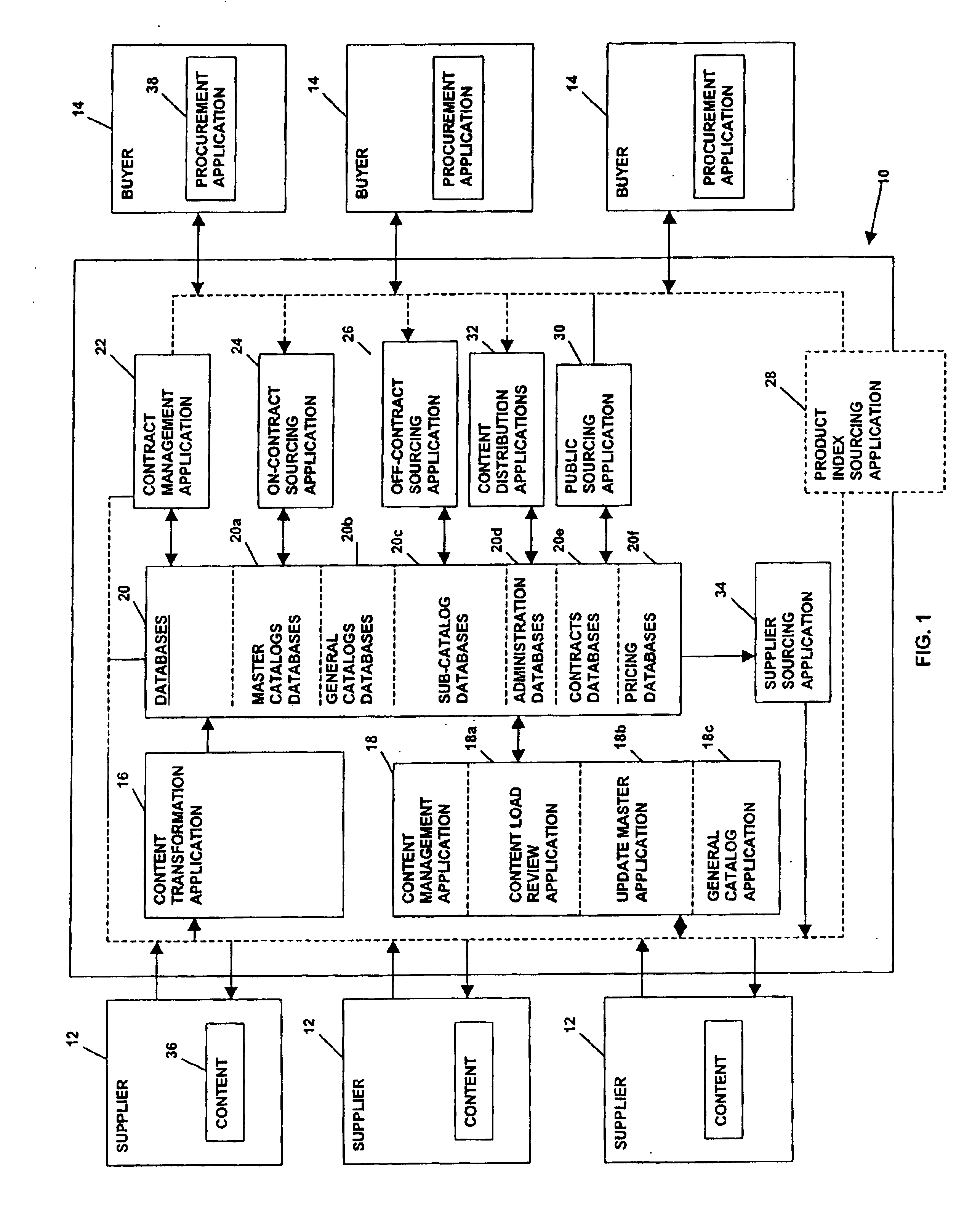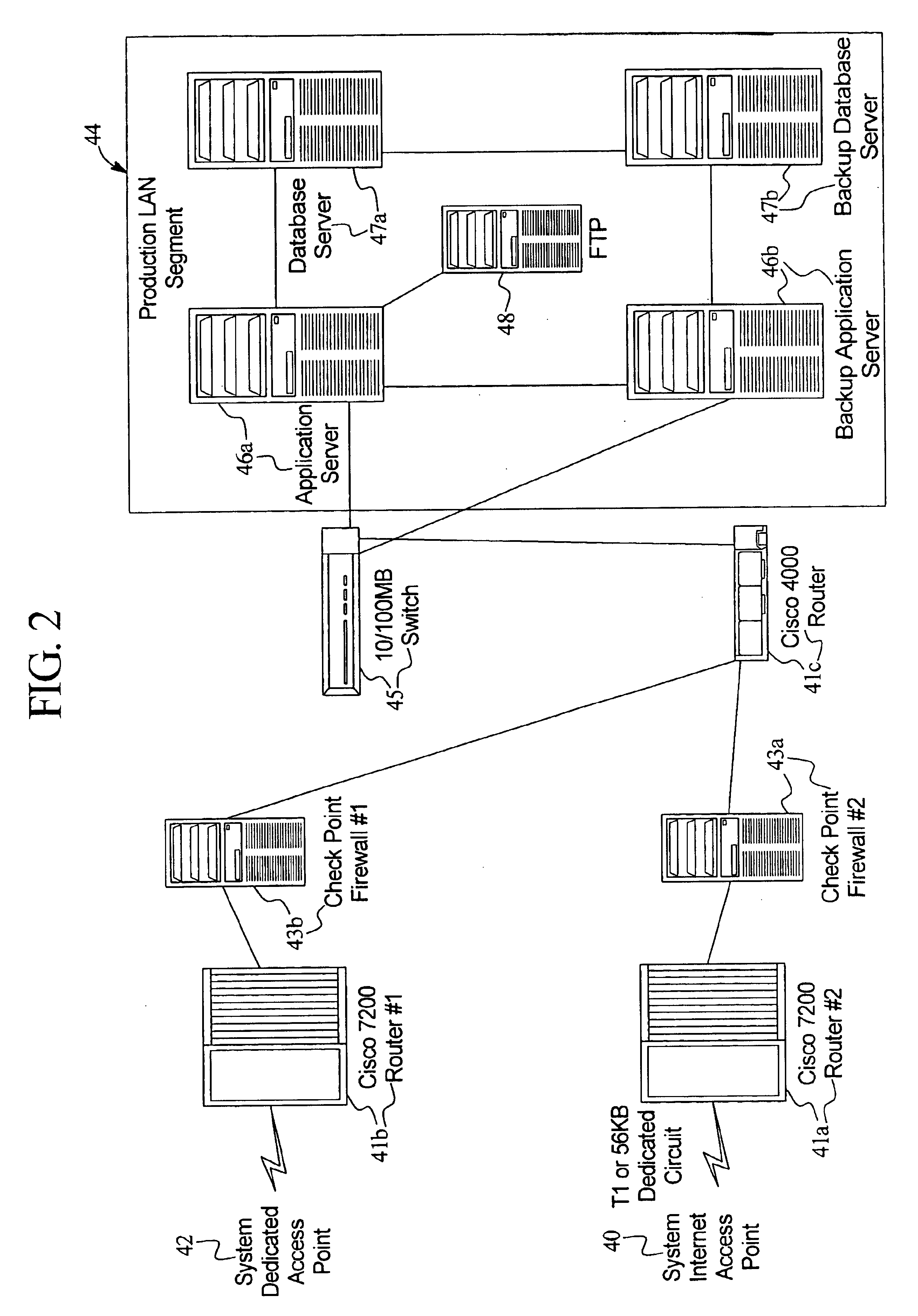Indirect or MRO procurement for large companies and other businesses is a cumbersome process characterized by large amounts of paperwork, lengthy cycle times, returns, frequent errors and costly “maverick” buying outside of established procurement rules and supplier contracts.
To manage this process, business requisitioners are often required to spend substantial amounts of time on inefficient, tactical tasks instead of focusing on strategic sourcing activities that reduce costs.
The result is an unbalanced business equation, in which businesses incur high per-transaction expenses for indirect supplies that, in and of themselves, have a relatively low-dollar value.
However, many suppliers do not have
product data available in
electronic form or, if they do, supplier electronic
product data is often incomplete or indecipherable and therefore unsearchable by buyers.
Further, there are few convenient and efficient methods for keeping supplier electronic
product data information up-to-date on a daily basis.
While this is a promising new selling channel for businesses, sell-side catalogs alone usually do not meet the needs of large corporate buyers.
First, buyers with hundreds or even thousands of suppliers do not have the time or resources to go to each supplier's
web site.
The fact that each
web site has its own
look and feel and ordering process complicates the procurement process and makes direct comparison between suppliers more difficult.
Secondly, most suppliers with
Internet based electronic catalogs do not have the necessary mechanisms in place to display each particular buying organization's contracted items with negotiated prices.
Third, such systems do not account for, are not integrated with, or are not compatible with the existing procurement systems of buying organizations.
Finally, purchases from such electronic sell-side catalogs are difficult to track and therefore do not provide buying organizations with the spending data needed to help the businesses make strategic
purchasing decisions.
This is a major challenge for large buying organizations, which often have a large number of suppliers
ranging from small operations with paper catalogs to electronic commerce-savvy major distributors.
In addition, the “build your own” option can be prohibitively expensive for buyers due to the sizable investment in
software, hardware and people required to create the catalogs, host them, and keep all the catalog information up-to-date.
Such buyer-side systems can also take significant periods of time and buyer personnel to implement.
It is also difficult to integrate commercial procurement systems with such buyer side systems.
Such systems work best for buying organizations with the ability to manage content, but lack complete product information update processes.
Additionally, buyers and suppliers do not favor such systems because these systems reduce direct contact between buyers and suppliers.
However, such systems have limited product lines and require use of multiple supplier interfaces.
Therefore, while various Internet-based intermediary catalog web sites and systems, sell-side web sites and systems, and buy-side web sites and systems have been proposed, developed and implemented, such known systems do not provide an all encompassing system which fully integrates the systems, needs and requirements of suppliers and buyers.
More specifically, such known systems generally have one or more of the following content related problems: (1) they provide only static content; (2) they either do not provide transactive content or provide transactive catalog content which requires significant resources and capabilities to create and maintain; (3) they do not integrate supplies and supplier content into existing purchaser procurement programs; (4) they provide content in different or incompatible formats; (5) they do not provide product information which is standardized or classified; (6) they provide complex and costly procedures for maintaining and managing content; (7) they do not integrate content providers; or (8) they require a large number of commodity managers to convert and update catalogs from suppliers.
Such known systems also have one or more of the following non-content related problems: (1) they do not provide suitable
scalability; (2) they provide catalogs and
order management limits with few suppliers; (3) they only support national or local contract ordering for known products, known suppliers, known prices, high volume orders or repetitive orders; (4) they require buyer customization; (5) they do not support non-contract ordering for planned or emergency spot buys or strategic buying for known or new products; (6) they require product and supplier differentiation (such that a supplier cannot also use the system to purchase products); (7) they provide only buyer managed catalogs; (8) they provide only supplier managed catalogs; (9) they permit only one buyer-manager (which works best for smaller organizations with a limited number of suppliers); (10) they permit only one supplier-manager (which works best for sophisticated suppliers with highly e-commerce enabled web sites); (11) they are inefficient because they require buyers to use multiple supplier sites, each site having different interfaces and search methods; (12) they provide supplier sites which do not integrate with buyer
purchasing systems; (13) they reduce direct contact between suppliers and buyers; or (14) they work best for spot or one time purchases.
Additionally, existing systems do not simultaneously satisfy the needs and requirements of large, medium and small sized suppliers and large, medium and small sized buyers.
 Login to View More
Login to View More  Login to View More
Login to View More 


